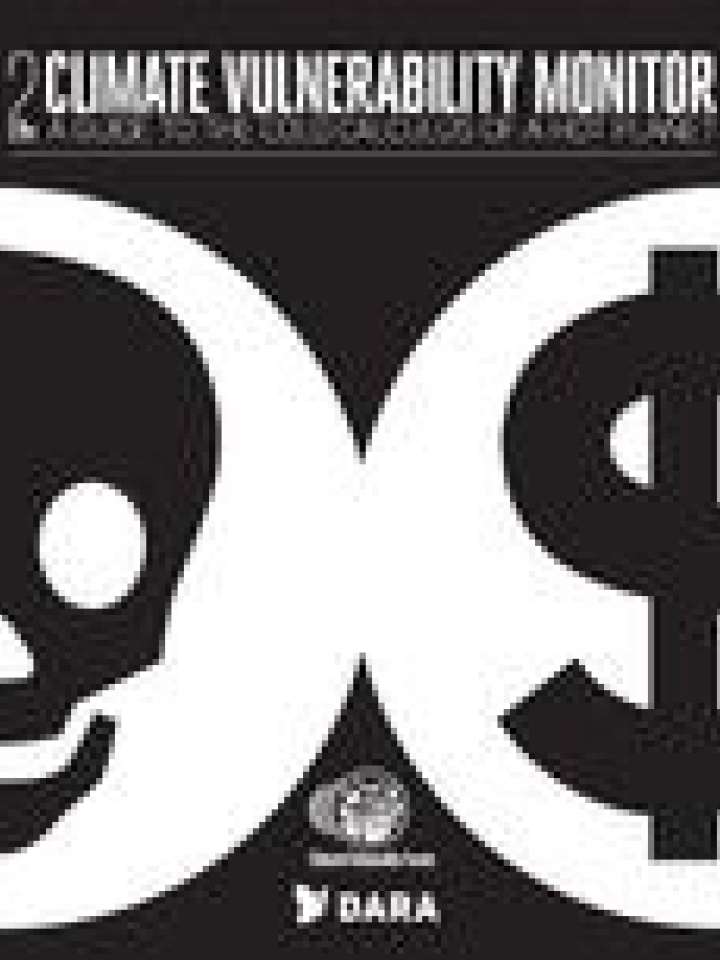Climate vulnerability monitor 2012: a guide to the cold calculus of a hot planet
This second edition significantly expands the existing evidence base to help shift policy and practice within the climate change domain. The climate section on environmental disasters, using drought, floods, landslides, storms, wildfires, heating, cooling, sea-level rise and water as indicators, among others, raises the following questions: (i) is the humanitarian system prepared for such rapid increases in the scale of emergencies; and (ii) are more capacities, resources and institutional coordination needed to ensure the international community is prepared?
The report states that comprehensive risk reduction efforts in implementating the Hyogo Framework for Action are helping to reduce vulnerabilities, even as world population and exposed infrastructure expand. It also considers a fundamental determinant of the success of national disaster prevention and recovery strategies the capacity of governments to develop and implement a range of risk-reduction measures, including the ability to incorporate considerations of disaster risk into wide-ranging state agendas, from education to municipal planning and fiscal tools.
The overall report highlights climate-related concerns, including carbon-intensive development and climate change impacts, as one of the world’s most serious health threats, drivers of humanitarian disasters, and a principal impediment to development, especially for countries already struggling to attain key international objectives like the Millennium Development Goals. It challenges a conventional view: that global action on climate change is a cost to society. Instead, it enlightens our understanding of how tackling climate change through coordinated efforts between nations would actually produce much-needed benefits for all.
Explore further
